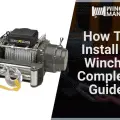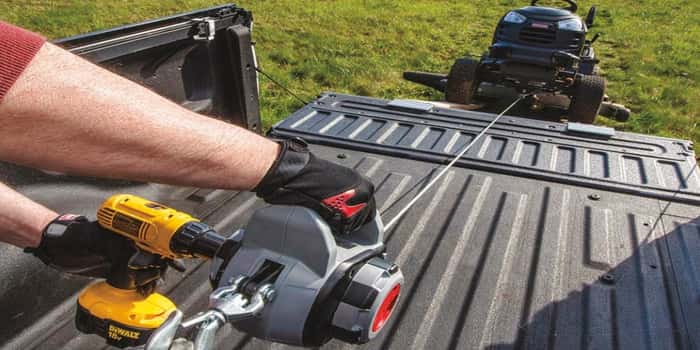You can’t always trust the abilities of a winch as described by the manufacturers. You have to make sure to test that it can do what it is advertised to be able to do. If you do that within the warranty period, you would have the chance to get a refund or a replacement if you find it unsatisfactory.
Bench testing is also helpful if you get an old winch, a secondhand one. Knowing how to bench test a winch comes in handy in many situations. It will guarantee the winch’s performance quality. It will also reveal some of the reasons why a winch may not be meeting its expectations.
In any case, the ability to bench test your winch is a must in my opinion. You can save a ton of money, tie and effort if you know how to do a thorough bench test.
At a Glance
What is a THOROUGH Bench Test
Bench testing, in my most basic definition, is seeing if a product works. It is an examination of an item to see whether it is up to the tasks it is made to handle.
The process should be thorough. You should leave no stone unturned. Every feature must be put to the test. In the case of a winch, it might mean the difference between a seamless vehicle recovery or being stranded for longer than you would want.
The Troubleshooting
Winches are tough pieces of machinery. But from time to time, they will need repairs even if regularly maintained. Here is an in-depth guide on how to troubleshoot or bench test your winch.
Before You Begin…
Winches are very powerful machines. A malfunctioning winch may cause damage to itself, its surrounding, or you. To avoid potential serious injury, let an authorized dealer or a professional take care of it if you are lacking in skills.
If the Winch does not Turn On
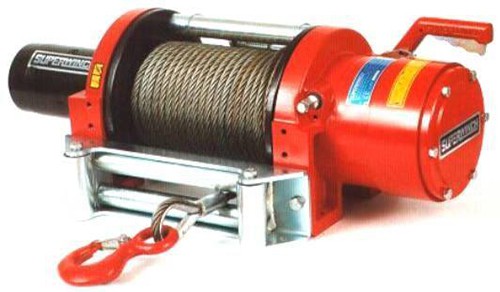
After all of the electrical wiring is secured and connected, and the car engine is running, nothing happens after pushing the winch switch. The motor does not turn, there is no sound – the winch is completely dead. You might want to do the following tests to isolate the issue.
Jumper Cable Test
This test will eliminate the winch motor from the equation. It will disregard any wiring to the winch and focus on whether the motor is working or not. To do the test, follow these steps:
- Disconnect all winch cables from the vehicle
- Remove the vehicle battery, or use a spare battery if you have one
- Connect the jumper cables to your vehicle battery. Red to the positive terminal and black to the negative terminal of the battery is the standard even if polarity is not really necessary for this.
- Reconnect the negative cable to any of the terminals of the winch.
- Use the positive cable to softly tap the opposite terminal. If an electrical activity manifests, it means that all of the electrical components in the winch are working fine. The drum should slightly move, if it does not, you can stop this test.
- if the winch drum moves, you can connect the positive cable to the terminal. The winch motor should turn in one direction.
- Reverse the connections. The drum should then turn in the opposite direction.
Cause of the Problem and the Solution
- A blown fuse
If your winch was drawing too much power, then it may have blown its fuse if it has one. If this is the case, you need only replace the fuse.
- A tripped circuit breaker
If your winch has a circuit breaker, it may trip if the winch is in potential trouble like being submerged in water. You can easily reset it if it has been tripped.
- A short circuit
A short circuit happens if the positive cable, the red one, gets in contact with any metal part. The cable may be damaged if , even after replacing the fuse or resetting the breaker, they immediately blow or trip. Damage in the switch may also cause a short.
Replace any damaged wire on the switch. If this does not solve the problem, the short may be inside the winch or contactor. Those will be tackled later on.
- Bad wiring
If your winch is newly installed, there must have been a problem with the wiring. Though wiring in a lot of winches are almost always the same, there may be a small but important difference in your particular model. To be sure that all connections are properly set up, you can refer to your owner’s manual.
If the winch is old and just won’t turn on, there may be corrosion in the wiring. You can easily fix the problem with sandpaper. One at a time, sand the terminals until they are shiny again. Fit them back again and they should be ready to go again.
- Unmaintained or damaged motor
As was mentioned above, if the jump cable test didn’t yield any result, the damage may be within the winch. You can do a voltage drop test to determine if there are problems in its electrical components.
Using a multimeter set to VDC, connect one of the probes to the grounding and the other to the blue or yellow cable. Polarity does not matter here. If, after activating both the multimeter and the winch, the reading does not go anywhere near your winch’s running voltage, there are problems in its electrical components. Most ATV components run on 12 volts.
If this is your problem, you may need only clean your winch motor. Although they are normally sturdy, dirt that penetrates the housing may cause a short.
Before cleaning the motor, make sure that it is utterly disconnected from the battery. When the motor is disassembled, you can use a toothbrush and a good spray of brake cleaning solution. Don’t forget to clean the housing as well. Wait until it is well dry before putting it back together and testing.
If cleaning still does not yield results, you may have burnt a coil or caused a short int eh motor. Those are possible if the motor overheated or was wired improperly. A complete motor repair or a total motor replacement may be your only solution if this is the case. For the former, a specialist can do a complete motor rebuild.
- Faulty switches
For cheaper winches, the remote may not be well protected. They may easily be damaged. If you have another switch, see if that works. If it works, your switch was your problem. It is unlikely that both switches are not broken, but if they are, or if you only have the one switch, there is another test you can do.
You can try jumping the motor. This is like hot wiring a vehicle. To do the test do the following steps:
- Set the engage lever on free spool
- Disconnect the switch plug from the socket
- Using a piece of wire (16 gauge or higher), jump the two opposing pins in the socket. The winch should then start.
- Try jumping other pairs of pins to see if there are effects on the motor. If the motor starts and/or turns the switch is your problem.
You can replace the switch to solve this problem.
- Damaged brushes
Over time, brushes may wear down or get damaged. Easily fix this issue by replacing these parts. You need only open the motor housing for inspection. If the brushes look worse for wear than new ones, replace them.
Motor Goes Only One Way
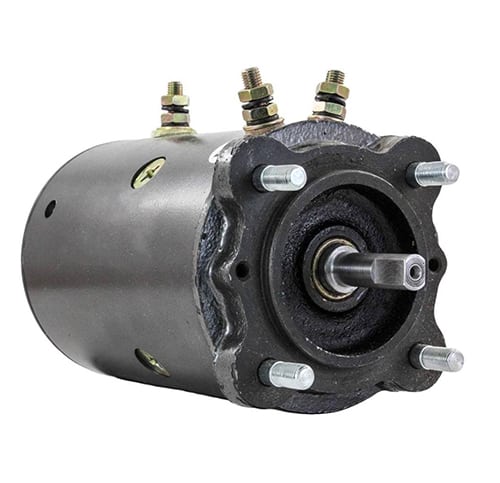
If your motor goes only one way, if it spools out but not back in or vice versa, there are a number of possible issues.
Possible Causes and their Solutions
- Bad wiring
Before you go buying new and expensive parts, check your wirings first. Most likely, the bad wiring is from the switch to the contactor. Either the cable is damaged or the connectors are loose or bent. Repair or replace any damaged wiring.
- Faulty switch
A faulty switch may allow for a limited function only. They may work fine for mono-directional turning. You can fix this issue by doing the same steps enumerated above.
- Solenoid troubles
The solenoid is basically what allows the motor to turn. It is activated by the contactor. Depending on the charge of the electricity that the contactor sends its way, the solenoid moves. It is the part that emits the clicking sound when the winch switch is activated.
Your problem may be that the solenoid is rusty, stuck, or broken. You can gently poke your contactor with a screwdriver handle. To shake it loose. This will only be a temporary fix though. If this is indeed your problem; you need to get a new contactor.
The Contactor Clicks but the Winch does not Function
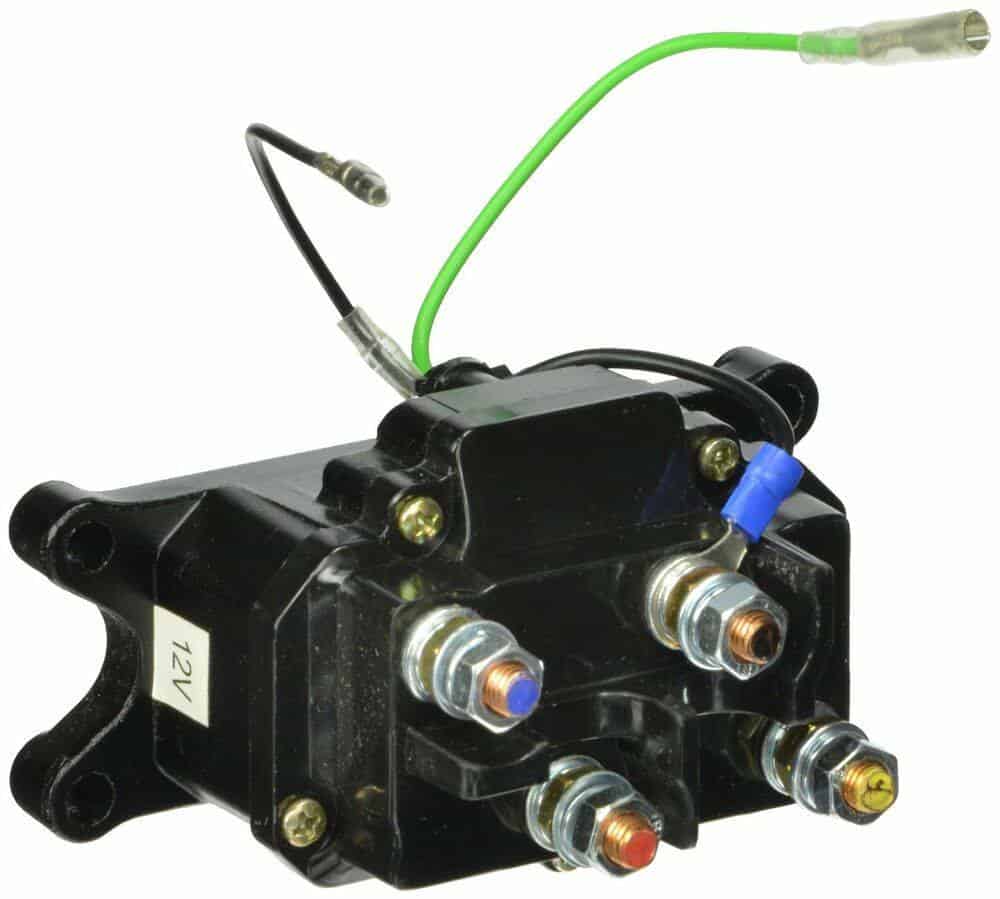
If your problem is a dead winch but with a functioning contactor, there is a bit of a positive side. First off, a clicking contactor means that everything from the switch to the contactor is all right.The possible issues can be narrowed down to a few items.
- Problems with the battery
Check if your battery is fully changed. Make sure that it has an output sufficient to power your winch. See also if all terminals are clean and fitted right.
- Winch motor shorted
If the problem is not in the battery, terminals or wiring, then it might be with the motor. Conduct the jumper cable test to see if the winch motor is working. It might also just be dirty.
- Damaged contactor
If the problem is not in the motor on the battery, it must be in the contactor. The solenoids may be firing up but they may not be connecting. This can happen if they have been damaged either by corrosion or overheating.
The Winch is Very Slow
If everything in your winch works fine except that it is very slow, there may be other problems. These same problems may also manifest in a weaker winch.
- Winch cable is spooled wrong
The cable may have been spooled wrong. If this is the case, it will work against the winch’s braking system. There should be a marker or a sticker that indicates the right drum rotation. If the cable is incorrectly spooled, spool it all the way out. Then re-spool it back in the right direction.
If you do not yet have a preference as to which type of winch line is better, you can see our informative steel cable wire vs synthetic rope. You might also want to know how to replace your winch cable should you need to do it.
- Not receiving enough power
Another possible reason for a slow or weak pull is insufficient battery power. If the winch is receiving a lower amount of juice than necessary, it will be weaker or slower.
Make sure that the battery works well. Change it or replace it if damaged. Also clean and reconnect the terminals.
- Greasing problems
If you put either too much or the wrong kind of grease (too thick grease) in the gears, it will not operate as smoothly. It is also possible that the old grease in the gears have been mixed with water or small particles. That will cause it to be sticky.
If your problems lie in the greasing, just clean the machine and apply the right amount of correct grease.
Conclusion
So far we have covered most of a winch’s performance tests. If you encounter possible problems, the best solutions have also been included. There are other parts of a winch that have not been tackled here, like the sliding ring gear or engage lever. However, these parts are very straightforward and can be fixed easily.
For a lot of time, proper and regular maintenance can keep your winch at optimum performance capacity. But if it has issues, this in-depth bench testing guide is very helpful for you.
If you have a need for parts, I suggest you purchase Superwinch parts. They are very cost-efficient. Affordable but not compromising in quality.
Do you have any questions about how to bench test a winch? How about a method that is simpler or better than what I have suggested here. If so, share them in the comments section.
